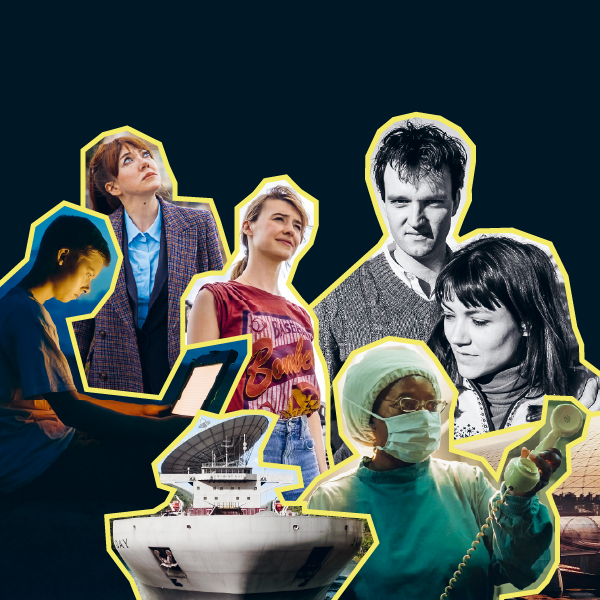Feature: Lessons from the pandemic
Sudden omnipresence
In the media circus surrounding the pandemic, it’s the loudest researchers who have been heard the most. The experienced science journalist Alexandra Bröhm here explains why it’s important that we should also listen to quieter voices in future, and why the state of scientific knowledge should be communicated with greater candour.
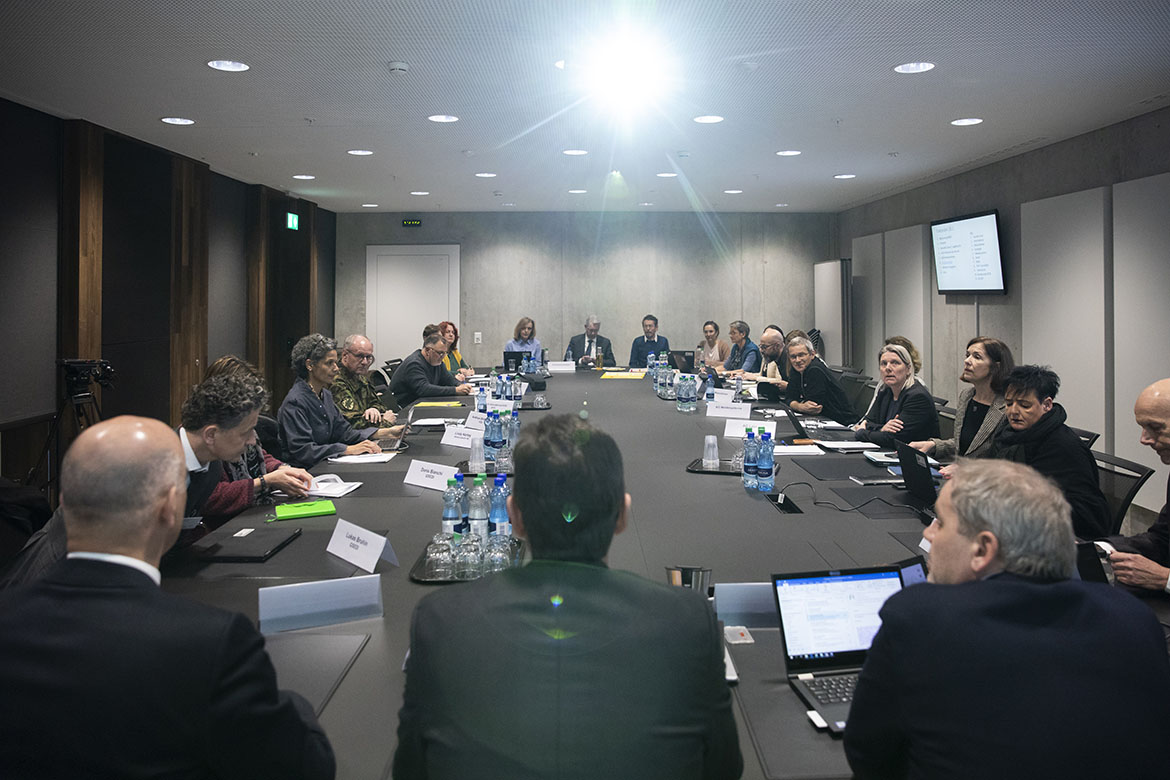
Friday 28 February 2020 in Bern, Switzerland: Swiss Federal Councillor and Health Minister Alain Berset, front left, attends a meeting of the task force of the Federal Office of Public Health on the prevention of the further spread of the coronavirus Covid-19. Image: KEYSTONE/Pool/Peter Klaunzer
Suddenly, the public was desperate to hear what they had to say. Scientists had become sought-after interview partners and talk-show guests. Some could barely move without being inundated with questions by the media. They were all required to offer constant explanations and prognoses.
This sudden limelight was both an opportunity and a challenge. Not everyone dealt with it in the same way. Just a glance at the Swiss Media Database (SMD) shows that a few names crop up time and again. Others have rarely sought public attention, even if they are in fact members of the national Covid-19 Science Task Force that the federal government set up in late March 2020.
This skewed distribution of names is not really surprising. Once the media recognise you as an ‘expert’, you’ll get more and more requests from them. Journalists are working these days under great pressure of time. So it’s easier to ask well-known experts for their opinions than to go out and find new ones. At the same time, sheer name recognition makes people seem especially important. But it would have been better if more scientists had spoken up.
The epidemiologist Marcel Salathé of EPFL is the man who crops up the most in the SMD. From mid-January to early June 2020, his name appears over 1,400 times. He was unknown to the broader public before the Covid-19 pandemic and only appears in the database nine times for the whole of 2019. But today, he even features on advertising posters for the Swiss National Railways (SBB). Some people might be critical of this, but why shouldn’t a scientist be treated the same as sportsmen, musicians or actors, especially in times like these?
Second place in the SMD list is occupied by Christian Althaus of the University of Bern, who appears nearly 700 times. Althaus was one of the first people to warn of the novel coronavirus. In an interview with the Sunday paper Sonntagszeitung on 26 January 2020, just when the first infections were being reported in Europe, he said: “This virus has the potential to trigger a pandemic”.
It is striking how few women researchers have made public statements during the past months, even those who are on the Task Force: Samia Hurst, a doctor, institute director and professor for bioethics at the University of Geneva, has just 50 entries in the SMD, while Sarah Tschudin Sutter, a senior physician at the Basel University Hospital, is mentioned just seven times.
There are many possible reasons for this silence on the part of women researchers. For one thing, the higher up you look in the academic echelons the fewer the women. This is especially the case in the natural sciences. At ETH Zurich, for example, just 14 percent of the professors are women. In my own work as a journalist for the daily newspaper Tagesanzeiger, I am repeatedly struck by the greater caution and hesitation demonstrated by women experts when they are asked to give a general assessment – even when their career history suggests that they are more than qualified to do so. During the present pandemic, researchers have often had to tread on thin ice when offering their opinions. But men seem to have fewer problems with this.
To give just one example: when a woman researcher on the Task Force was asked for her opinion, she instructed her media department to reply that she would only talk about concrete study results. When one of her male colleagues was similarly approached, however, he gave an extensive interview.
The longer the pandemic lasted, the more difficult it became to get through to researchers from the relevant fields. This is understandable, but it has made my work more difficult.
Reporting on this pandemic remains a challenge. Studies are being conducted at top speed, and their initial results have barely appeared on preprint servers, unreviewed, when they are picked up by the media for the latest headlines. Sometimes it has all gone so quickly that researchers have given interviews about their latest study even before uploading the preprint. This furious tempo has posed a dilemma to experts in Switzerland, as also elsewhere. Suddenly, their field became the centre of attention, and they were keen to use this moment of opportunity. But at the beginning of the pandemic, much was still completely unknown. Not all of them have dealt with this dilemma in the same way, and not all of them possess the knowledge that would enable them to offer well-founded assessments. What’s more, those who have spoken out the loudest are not always those who know the most.

“Deaths are just as rare as with a seasonal flu”.Pietro Vernazza
In the initial weeks of the outbreak, from the end of January onwards, the main prognoses about its possible course came from the epidemiologist Christian Althaus and the biophysicist Richard Neher from the University of Basel. This early phase was also notable for the immense degree of uncertainty involved.
Despite this uncertainty, not everyone reacted with a similar degree of caution. The infectious diseases researcher Pietro Vernazza from St. Gallen spoke out early, and was notable for making statements that contradicted the reigning opinions at the time. In an interview with the Appenzeller Zeitung on 28 January, Vernazza offered his opinion on the consequences of being infected with the novel coronavirus: “Deaths are just as rare as with a seasonal flu”. But four days earlier, the World Health Organization (WHO) had already warned that the “disease can take a serious course, in some cases ending in death”. And things were in any case too uncertain for the death rate to be calculated properly.
Even in early February, Vernazza was telling the daily newspaper Blick how he doubted whether the epidemic “would be any more serious than a bad seasonal flu”. He also caused a stir by announcing that he would order people to quarantine themselves at home if they got a mild case of the disease – this was before the first cases were discovered in Switzerland, and at a time when every individual diagnosed with the virus was being kept in isolated rooms in hospitals. A few weeks later, however, on 27 February, Vernazza had to correct his earlier, incautious statements in an interview with the weekly paper Wochenzeitung. He now admitted that the death rate for the flu was in fact five to 10 times less than for the coronavirus.
Vernazza was also one of the few experts to argue publicly against closing the schools. In March and April, however, there was no clear proof either for or against. Everything that was known about closing down the schools was founded on existing knowledge of flu epidemics. But this data is only of limited significance, because children are a major factor in the spread of the flu. In the case of Covid-19, their role remains highly contentious, though the data suggests increasingly that children are less prone to infection than adults.
The economist Reiner Eichenberger of the University of Fribourg also garnered attention with statements not based on scientific fact. He did not restrict himself to speaking about his own field on his public appearances, but also offered comments on medical issues. In an interview with the Tagesanzeiger in early May 2020, Eichenberger said, “the medical dangers [of the novel coronavirus] were probably overestimated”. He did not elucidate the scientific basis for this claim. According to the Swiss Federal Office of Public Health (FOPH), 1,426 people had already died on account of Covid-19 in the two months leading up to late April 2020.

“The goal might be a well-managed spread of the infection”.Reiner Eichenberger
In the first half of March 2020, Eichenberger had given an interview to the daily paper 20 Minuten, claiming that, “the goal could be a well-managed spread of the infection”. He suggested that young people should infect themselves intentionally while older people stayed at home. Today, we know all too well just how unrealistic this notion was. Many young people live together with those who are at higher risk, and when the authorities in Sweden pursued just such a policy, the situation only escalated. In mid-April, Eichenberger demanded “mass tests” for immunity as a possible strategy for exiting the lockdown. But the dubious reliability of antibody tests was already a topic of discussion at the time.
Overall, it would be preferable for researchers to communicate clearly in future about the current state of knowledge, and about what remains unknown. Online journalism in particular makes its living from issuing snappy headlines, which doesn’t make things any easier. But we might be able to deal with problems better if people told us clearly what they know and what they don’t.
Today, you can hear laypeople dropping epidemiological concepts into their conversation that were barely known outside expert circles until last January. But not all researchers are equally gifted at making their fields comprehensible to a broader public. In the print media, it’s the task of journalists to formulate or embed expert statements so as to make them easier to understand. This is sometimes more difficult on the radio or TV.
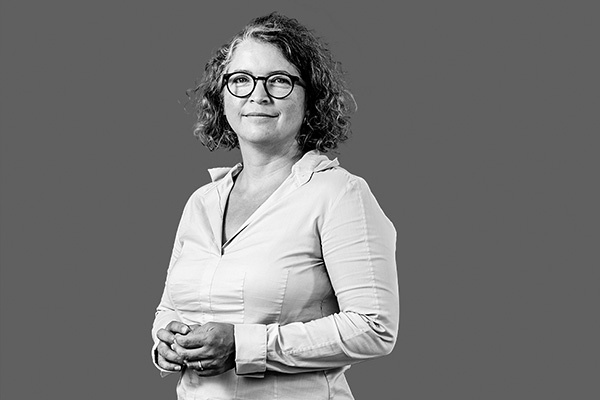
“Voluntary consent cannot serve as an ethical argument in favour of vaccine tests”.Samia Hurst
One expert who has nevertheless made a good impression in this context is the bioethicist Samia Hurst of the University of Geneva. Her comments on the different ethical dilemmas of the pandemic have been clear and resolute, regardless as to whether she is talking about possible triage procedures or the risks of vaccine tests. “Even if people want to take part of their own free will, such voluntary consent cannot serve as an ethical argument in favour of such tests”, she told the Tagesanzeiger on 6 May 2020.
The epidemiologist Christian Althaus also provided much educational information about his field in the early weeks of the pandemic, when he repeatedly and patiently explained in basic language what the R value means, and how his research was progressing.
But some researchers displayed astonishment at how the public media conducted themselves. Althaus himself had to experience the negative aspects of public attention after an interview published in the Neue Zürcher Zeitung (NZZ) on 26 February. When asked by the journalists whether Switzerland could expect up to 30,000 dead as a result of the pandemic, Althaus answered that “the possibility of such a worst-case scenario cannot be excluded”.
The commuter newspaper 20 Minuten Online condensed the NZZ interview into a brief article, and put the figure of ‘30,000 dead’ in the title. This was a typical example of ‘clickbait’ journalism, and the daily newspaper Blick used something along the same lines. Althaus reacted with disgust on Twitter: “I find it irresponsible how @Blickch and @20min generate #Covid19 epidemic headlines with worst-case scenarios. There is no reason for panic, but we have to be prepared for an epidemic”. Althaus briefly withdrew from commenting in the media, but soon re-entered the fray when the situation became more critical in the first two weeks of March. An NZZ journalist published a commentary on the matter on 9 March, noting that “the media and science are two systems that don’t function well together”.
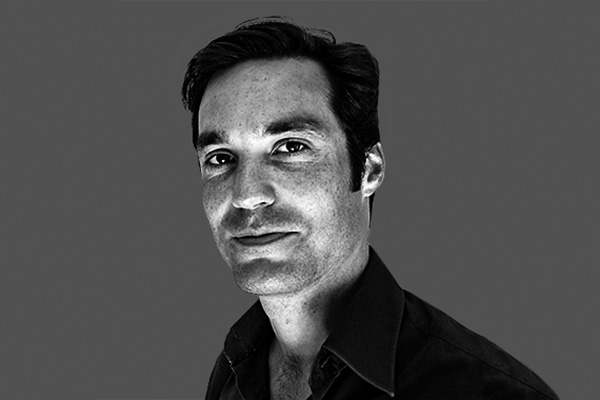
“I find it irresponsible how @Blickch and @20min generate #Covid19 epidemic headlines using worst-case scenarios”.Christian Althaus
After Althaus, it was the turn of the EPFL epidemiologist Marcel Salathé to comment on the crisis. On 26 February, he gave an online lecture about the coronavirus pandemic, and was thereafter more or less omnipresent in the media. They loved him, because he did not shy away from making trenchant comments.
As it happens, Switzerland actually has a researcher well-versed in coronaviruses: the virologist Volker Thiel of the University of Bern. But he was conspicuous in his hesitation to appear in the media. Now and then, he could be seen on the Swiss health television programme ‘Puls’, though in fact he possesses the kind of expert knowledge that would have enabled him to offer detailed commentary on all manner of situations and decisions. If he had held back less, his could have been a further significant voice in the media coverage of the pandemic.
Researchers suddenly also began to play a more important role in political decision-making, although this took a bit longer to happen in Switzerland than it did in other countries. In the first two months of the pandemic, a number of scientists – Salathé and Althaus among them – complained that the Federal Office of Public Health (FOPH) was too slow to seek the advice of researchers. In his interview with the NZZ of 26 February, Althaus said, “I have noticed that the press conferences of recent weeks have been continuously spreading incorrect information”.

“These weeks have shaken my trust in politics”.Marcel Salathé
Scientists became increasingly vociferous in the first two weeks of March. Some of them stopped beating around the bush, and complained openly that the federal government was reacting too slowly to the growing infection rate. “We need immediate, drastic measures”, said the infectious diseases and gene specialist Jacques Fellay of EPFL on 13 March in the Tagesanzeiger. Also on 13 March, a broad alliance of 25 researchers from different fields – men and women – finally wrote an open letter to the Federal Council.
Shortly before this, Althaus had expressed astonishment that “we are giving up recording the precise details of the epidemic just a week after the first case of the virus appeared in Switzerland”. On 21 March, Salathé wrote on Twitter: “These weeks have shaken my trust in politics”. Their protests had the necessary impact. In late March, the national Covid-19 Science Task Force was set up, which has since then been advising the federal government.
Nevertheless, the influence of these researchers has remained less than it was supposed to be. At decisive moments, Swiss politicians have still declined to follow the recommendations of science. The FOPH dithered about face masks for months, even though different experts had by April spoken out clearly against the official doctrine of Daniel Koch, the then Head of the Communicable Diseases Division at the FOPH, who believed that protective masks made no difference at all. And on 21 June, the then head of the Task Force, Matthias Egger, gave an interview to the Sonntagszeitung in which he said that “we, the Science Task Force, believe that the further easing of measures is being taken too soon, given the current uncertainty”. But this protest went unheard. Shortly afterwards, case numbers began to rise again, confirming their fears.
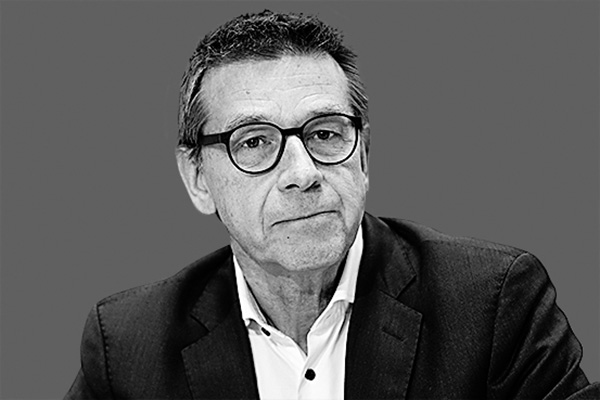
“We, the Science Task Force, believe that the further easing of measures is being taken too soon, given the current uncertainty”.Matthias Egger
In April, the ETH mathematician Tanja Stadler stepped into the political debate. On 8 April, her team published a study on the effectiveness of the measures Switzerland was taking against the coronavirus. When the media reported this, several of them began by stating that the infection rate had already begun to level off before the lockdown – despite Stadler’s clear statement that the measures undertaken by the federal government had been necessary in order to bring the R value down decisively. In an article published in the Tagesanzeiger on 10 April, she wrote: “[These figures] mustn’t be subjected to overinterpretation”. And she explained that her model calculations always had to work with certain assumptions, which can also lead to distortions. “This is why it is problematic to focus too closely on specific dates”, she explained. Her team refined their model in the ensuing weeks.
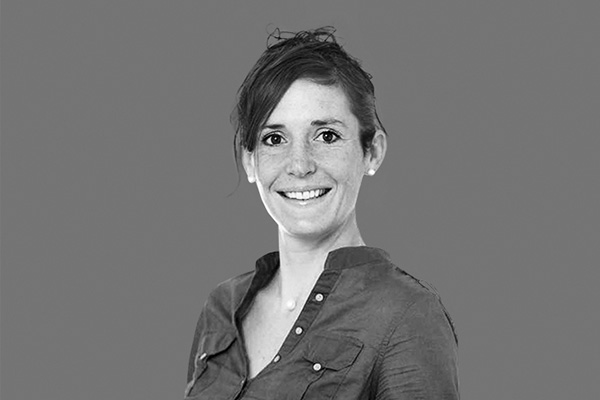
“[These results] mustn’t be subjected to overinterpretation”.Tanja Stadler
Nevertheless, the headlines in question triggered a political debate about whether the lockdown had been necessary at all. The opponents of the lockdown tried to exploit Stadler’s study for their own ends. In the process, the crucial point she had insisted on – that calculating the R value is always based on certain assumptions – was lost completely in the hubbub.
In mid-March, the neuropathologist Adriano Aguzzi of the University of Zurich caused a stir with a YouTube video in which he held up hand-drawn graphics to the camera. He made a passionate plea to viewers to stay at home so that the infection rate would not rise any more drastically. In an interview he gave to the online magazine Higgs on 13 March, Aguzzi also insisted that Switzerland ought to impose a strict lockdown just like Italy. “I get the feeling that Switzerland is completely devoid of leadership”, said Aguzzi about the approach being taken by the Federal Council. The next few months would show that his demand for a complete lockdown had been excessive. But his video got a lot of attention, and quite possibly contributed to the general realisation among the population that the situation was indeed serious.
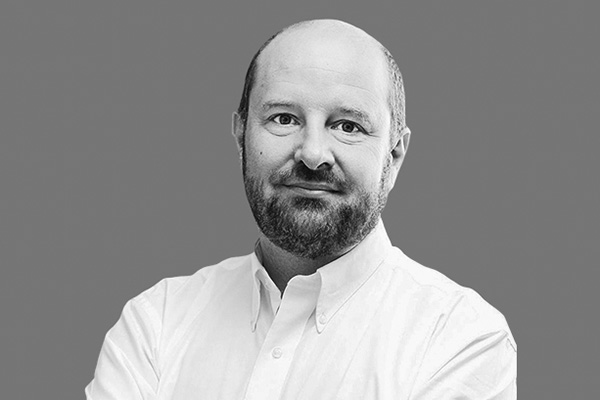
“I get the feeling that Switzerland is completely devoid of leadership”.Adriano Aguzzi
By contrast, the then head of the Science Task Force Matthias Egger attracted attention with his calm, level-headed media appearances and statements. He is an epidemiologist at the University of Bern. When the NZZ asked him on 11 May what level of infection would point to the danger of a second wave, he said: “As soon as the number of reported cases climbs above 100 and moves towards 200, we will have to talk about tightening protective measures”. And in the discussions about face masks, Egger also proved over and again that he was the right man to lead the Task Force at the time.
Social media play a central role in disseminating news today. The longer the pandemic has lasted, the more hoaxes and conspiracy theories about the virus have begun to spread across them. If researchers are going to be able to combat such ‘fake news’, it’s all the more important for them to have an active presence in social media themselves.
Twitter tends to be the preferred forum for scientists today, because they can include links or commentaries to studies by other scientists, or offer their own opinions about the course of the pandemic. The audience for such tweets primarily includes the many journalists, politicians and researchers who also use the platform. But young people are rarely active on Twitter. They’ve usually set up their smartphones to exchange news on Instagram, Snapchat, TikTok or WhatsApp. It would be a good thing if Swiss researchers were active on these platforms too, as it could help them to reach the younger generation.

“There are many things to take into account – CFR always varies by location, method of counting, underlying practices – and perhaps most importantly, time”.Emma Hodcroft
Salathé is one of the few scientists to have his own public Instagram profile. But his last entry was made in 2017, and his Instagram account offers no information about the pandemic. So hardly any kind of dialogue exists with younger age groups. And while Twitter offers a home to many scientists, this does not mean that Swiss researchers are all equally active either – far from it.
The molecular biologist Emma Hodcroft from the Basel Biozentrum has been investigating the mutations of the coronavirus, and she’s been a constant media presence throughout the months of the pandemic. From February to June, she often issued 15 to 20 tweets and retweets a day. Her followers thereby got a good insight into the general situation, and into the work she and her colleagues were carrying out. On 28 March, for example, she wrote about the vagaries of the case fatality rate (CFR), and why it is so different from one country to the next: “There are many things to take into account – CFR always varies by location, method of counting, underlying practices – and perhaps most importantly, time”. She followed this up with a series of ten more tweets on the topic.

“Here’s a short thread on some rather worrying misinterpretations of the meaning and implications of ‘asymptomatic’”.Nicola Low
Some researchers who are active on Twitter have been more reticent about speaking through traditional media. For example, the epidemiologist Nicola Low of the University of Bern has been tweeting and retweeting daily. On 4 April, she took up the topic of asymptomatic cases in a series of tweets: “Here’s a short thread on some rather worrying misinterpretations of the meaning and implications of ‘asymptomatic’”. Those who have been following these researchers have therefore been able to garner valuable additional information on the current state of both the pandemic itself and the research being conducted into it.

